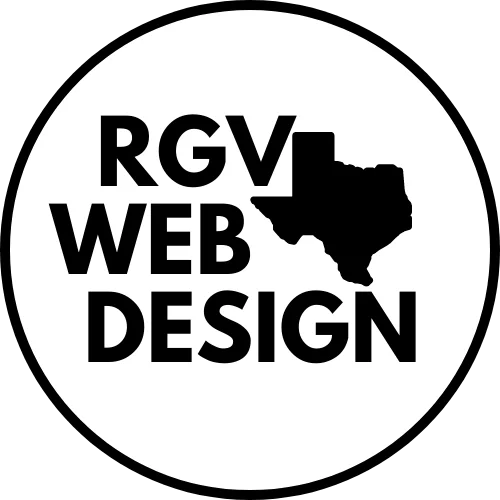In today’s digital age, full-stack web development has become a highly sought-after skill. A full-stack developer has the expertise to work on both the front-end and back-end aspects of a web application, making them invaluable in the tech industry. Whether you’re in McAllen, Brownsville, or anywhere in South Texas, learning full-stack development can open doors to numerous career opportunities. This guide will outline a comprehensive track for mastering full-stack web development.
What is Full-Stack Web Development?
Full-stack web development involves building and maintaining both the front-end (client-side) and back-end (server-side) of web applications. The front-end is what users interact with, while the back-end includes the server, database, and application logic that power the front-end.
Key Components of Full-Stack Development:
- Front-End Development: Focuses on creating the visual and interactive aspects of a website using HTML, CSS, and JavaScript.
- Back-End Development: Involves server-side logic, database management, and application integration using languages like Python, Ruby, PHP, and frameworks such as Node.js, Django, and Ruby on Rails.
- Database Management: Understanding how to work with databases like MySQL, PostgreSQL, MongoDB, etc.
- Version Control Systems: Using tools like Git for managing and tracking code changes.
Learning Path for Full-Stack Web Development
1. Foundations: HTML, CSS, and JavaScript
Start with the basics of web development by learning HTML, CSS, and JavaScript. These languages form the foundation of web development.
- HTML (Hypertext Markup Language): The standard language for creating web pages. Learn how to structure your content with elements and attributes.
htmlCopy code<!DOCTYPE html>
<html>
<head>
<title>My First Web Page</title>
</head>
<body>
<h1>Welcome to My Website</h1>
<p>This is a paragraph of text on my first web page.</p>
</body>
</html>
- CSS (Cascading Style Sheets): Used for styling and laying out web pages. Understand selectors, properties, and values.
cssCopy codebody {
font-family: Arial, sans-serif;
}
h1 {
color: blue;
}
p {
font-size: 16px;
}
- JavaScript: A programming language that enables interactive web pages. Learn the basics of syntax, variables, functions, and DOM manipulation.
javascriptCopy codedocument.getElementById("myButton").onclick = function() {
alert("Button Clicked!");
};
2. Advanced Front-End Development
Enhance your front-end skills by learning more advanced concepts and frameworks.
- Responsive Design: Learn how to make your web pages look good on all devices using media queries and responsive frameworks like Bootstrap.
cssCopy code@media (max-width: 600px) {
.container {
width: 100%;
}
}
- JavaScript Libraries and Frameworks: Master popular libraries and frameworks like React, Angular, or Vue.js to build dynamic and efficient user interfaces.
javascriptCopy code// Example using React
import React from 'react';
import ReactDOM from 'react-dom';
function App() {
return (
<div>
<h1>Hello, World!</h1>
</div>
);
}
ReactDOM.render(<App />, document.getElementById('root'));
3. Back-End Development
Once you’re comfortable with the front-end, start learning back-end technologies.
- Server-Side Languages: Choose a back-end language like Node.js (JavaScript), Python, Ruby, or PHP.
javascriptCopy code// Example using Node.js with Express
const express = require('express');
const app = express();
app.get('/', (req, res) => {
res.send('Hello, World!');
});
app.listen(3000, () => {
console.log('Server is running on port 3000');
});
- Database Management: Learn how to interact with databases using SQL for relational databases (MySQL, PostgreSQL) or NoSQL for non-relational databases (MongoDB).
sqlCopy code-- Example using SQL
CREATE TABLE users (
id INT AUTO_INCREMENT PRIMARY KEY,
name VARCHAR(100),
email VARCHAR(100)
);
INSERT INTO users (name, email) VALUES ('John Doe', 'john@example.com');
- Frameworks: Use frameworks like Django (Python), Ruby on Rails (Ruby), or Laravel (PHP) to streamline back-end development.
pythonCopy code# Example using Django
from django.http import HttpResponse
def index(request):
return HttpResponse("Hello, World!")
4. Full-Stack Development
Combine your front-end and back-end skills to become a full-stack developer.
- APIs and RESTful Services: Learn how to create and consume APIs (Application Programming Interfaces) to enable communication between the front-end and back-end.
javascriptCopy code// Example of a simple API using Express (Node.js)
const express = require('express');
const app = express();
app.use(express.json());
let users = [
{ id: 1, name: 'John Doe' },
{ id: 2, name: 'Jane Doe' }
];
app.get('/api/users', (req, res) => {
res.json(users);
});
app.post('/api/users', (req, res) => {
const newUser = { id: users.length + 1, name: req.body.name };
users.push(newUser);
res.json(newUser);
});
app.listen(3000, () => {
console.log('Server is running on port 3000');
});
- Authentication and Authorization: Implement user authentication and authorization to secure your web applications.
javascriptCopy code// Example of user authentication using Passport.js (Node.js)
const express = require('express');
const passport = require('passport');
const LocalStrategy = require('passport-local').Strategy;
passport.use(new LocalStrategy(
function(username, password, done) {
// Replace with actual user validation logic
if (username === 'admin' && password === 'password') {
return done(null, { id: 1, username: 'admin' });
} else {
return done(null, false, { message: 'Incorrect credentials' });
}
}
));
const app = express();
app.use(require('body-parser').urlencoded({ extended: true }));
app.use(require('express-session')({ secret: 'secret', resave: false, saveUninitialized: false }));
app.use(passport.initialize());
app.use(passport.session());
app.post('/login',
passport.authenticate('local', { failureRedirect: '/login' }),
(req, res) => {
res.redirect('/');
});
app.listen(3000, () => {
console.log('Server is running on port 3000');
});
5. Version Control and Deployment
Learn how to use version control systems like Git to manage your code and collaborate with others.
bashCopy code# Basic Git commands
git init # Initialize a new repository
git add . # Add files to staging area
git commit -m "Initial commit" # Commit changes
git push origin master # Push changes to remote repository
Familiarize yourself with deployment platforms like AWS, Heroku, or Netlify to deploy your applications.
bashCopy code# Example of deploying a Node.js app to Heroku
heroku create my-app
git push heroku master
heroku open
6. Continuous Learning and Improvement
Web development is an ever-evolving field. Stay updated with the latest trends, technologies, and best practices by following industry blogs, attending webinars, and participating in online communities.
Conclusion
Becoming a full-stack web developer involves mastering both front-end and back-end technologies. By following this comprehensive learning path, you can develop the skills needed to build and maintain complete web applications. Whether you’re automating business processes, creating dynamic websites, or developing APIs, full-stack development offers a rewarding and versatile career.
For professional guidance and support in your web development journey, consider reaching out to RGV Web Design LLC. We offer expert web development services tailored to meet your needs. Contact us at 956-800-2948 or visit our website at rgvwebsitedesign.com to learn more about how we can help you achieve your web development goals.
Relevant Links:
W3 Schools
MDN Web Docs


